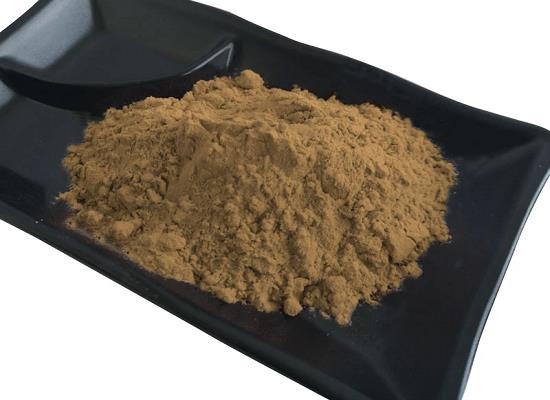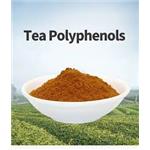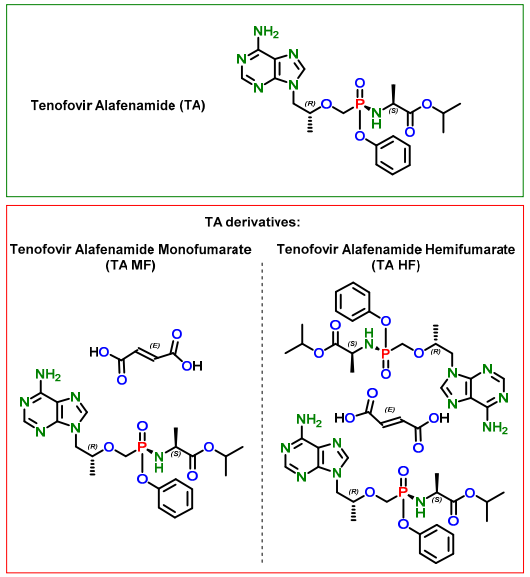Tea Polyphenol: Antimicrobial Activities and its Mechanism
General Description
Tea is made from the leaves of the tea plant, which is native to China and other Asian countries. Tea polyphenols, caffeine, and other beneficial chemicals are found in almost all forms of tea. The polyphenolic compounds contained in green tea mainly include flavonoids, flavanols, phenolic acids, and the like.

Tea polyphenols, commonly known as catechins, are flavonoid compounds with a basic structure of α-phenyl-benzopyran, about 18% to 36% of the dry weight of tea leaves. The most important types of tea polyphenols can be divided into the following 4 types: (−)-epigallocatechin-3-gallate (EGCG), (−)-epicatechin-3-gallate (ECG), (−)- epigallocatechin (EGC) and (−)-epicatechin (EC). The catechins are composed of 3 hydrocarbon rings and are structurally classified into ester catechins (EGCG, ECG) and non-ester catechins (EGC, EC). The EGCG makes up about 59% of total catechins, while EGC accounts for about 19%, ECG accounts for 13.6%, and EC accounts for about 6.4%. Sorted by their oxidation resistance: EGCG ≈ ECG > EGC > Gallic acid (GA) > EC = Catechin. The number and position of hydroxyl groups in the molecular structure of these polyphenolic compounds largely determine their antioxidant properties. As such, the catechins have strong hydrogen supply capacity on the B and C rings, and the 2,3- double bond and the unsaturated 4-oxo group in the C-ring promote the electron delocalization (free electron) of the ortho-dihydroxy catechol in the B-ring. Furthermore, the antioxidant activity of these polyphenols is related to the molecular structure, starting conditions, and microenvironment of the reaction medium. In addition to tea polyphenols, there are various phenol derivatives and polyphenol analogues in tea, such as quercetin, kaempferol, and myricetin. Since these substances all have a 4-oxo 3-hydroxy C ring structure, they exhibit oxidation resistance.
Antimicrobial mechanism
Tea polyphenol (TP), as a natural tea extract, has been shown to have antimicrobial activity against human and animal disease-related bacteria, phytopathogenic bacteria, food-borne bacteria, pathogenic viruses and pathogenic fungi.
The main mechanism of TP focuses on the following: (i) Damage to lipid membranes of bacteria. It involves inducing rapid leakage of small molecules entrapped in the intraliposomal space and aggregation of the liposomes. Catechins damaged the membrane of Escherichia coli O157. Furthermore, catechins damaged the bacterial vegetative membrane, including the spore membrane of spore-forming bacterial pathogens. (ii) Attack of the cell membranes causing lysis of the conidia and hyphae of pathogenic fungi. (iii) Antiviral action includes inhibiting enzymes such as antioxidants, disrupting cell membranes, preventing viral binding and penetration into cells and triggering the host cell self-defence mechanisms. (iv) Control of the ROS–NO pathway. Nitric oxide (NO) and related pathways are thought to play an important role in the pathogenesis of Parkinson’s disease. Green TP might protect dopamine neurons by inhibiting NO and reactive oxygen species (ROS)[2].
Antioxidant mechanism
A growing number of epidemiological studies have shown that the intake of polyphenols delays ageing and helps prevent and treat cancer and neurodegenerative, cardiovascular, and cerebrovascular diseases. After entering the animal body, the mechanism by which tea polyphenols produce antioxidant effects includes the following processes: the increase in activity of antioxidant enzymes, the inhibition of lipid peroxidation, the scavenging of free radicals in synergy with other nutrients, and the reduction of oxidation via chelation of metal ions. These processes are combined to reflect the effect of antioxidants. The antioxidant mechanism of phenolic compounds can be summarized as a transfer based on hydrogen atoms or a single electron transfer through protons; however, catechins and theaflavins may also promote the production of ROS in the body.
Reference
[1] Zhaoming Yan . “Antioxidant mechanism of tea polyphenols and its impact on health benefits.” Animal Nutrition 6 2 (2020): Pages 115-123.
[2] H M Liu. “Inhibitory activity of tea polyphenol and Candida ernobii against Diplodia natalensis infections.” ACS Applied Electronic Materials (2010): 1066–1072.
Lastest Price from Tea polyphenol manufacturers

US $1200.00-1100.00/ton2025-10-14
- CAS:
- 84650-60-2
- Min. Order:
- 1ton
- Purity:
- 99%
- Supply Ability:
- 1000T/M

US $0.00-0.00/kg2025-06-11
- CAS:
- 84650-60-2
- Min. Order:
- 0.001kg
- Purity:
- 99.99%
- Supply Ability:
- 20000000t


